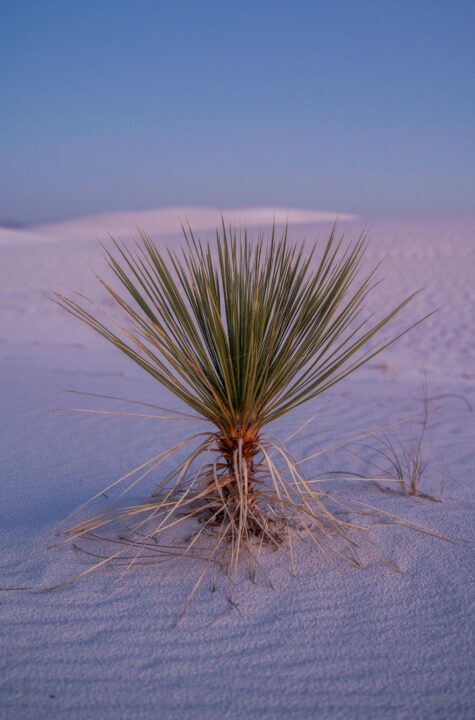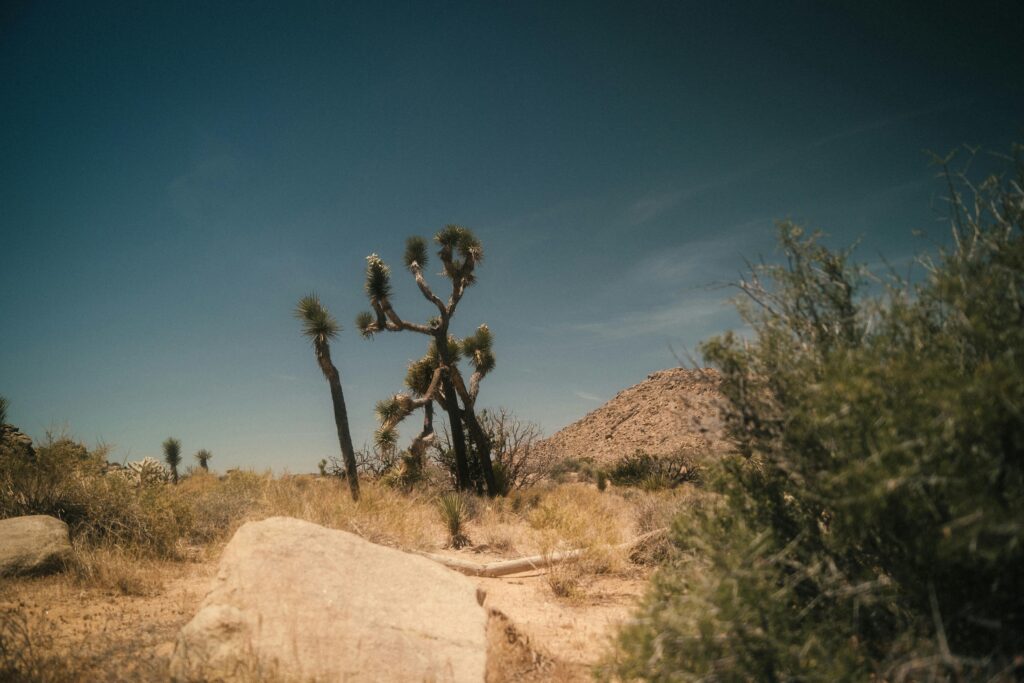Small leaves are some types of adaptational tricks that help plants that grow in desert places where there is less water survive in their environment. A desert environment where the water supply is low and there is little or no rain throughout the year. From the intense scorching heat of the sun to a burning sensation under your feet.
These adaptive mechanisms help plants in desert environments reduce water loss through:
- Transpiration
- It helps regulate the temperature
- Provide protection against herbivores.
Desert plants have devices to increase their chances of survival, especially in arid regions, by evolving their leaves to a smaller shape.
In this write-up, you will understand more elaborately why are small leaves an adaptation in desert environments and their sole purpose for this sort of adaptation. We will explain why these tiny leaves play a crucial role in helping these plants survive in these harsh desert environments.
Factors Leading to the growth of Small Leaves in Deserts
In order to survive the harshness of desert environments, the adjustment is usually made as soon as the plants start to grow. The environment is already known to be harsh and high in temperature; hence, adjusting to fit the weather conditions is required.
One factor that is also very crucial in helping the plant conserve water is the size of the leaves it has. When the temperature is high and the sun is scorching, these small leaves help retain a lot of water because of the small surface area they have, through a process called transpiration. After all, a small surface area means less area exposed to the sun.
Additionally, small leaves help plants regulate their temperature more efficiently by minimizing heat absorption. This adaptation allows them to thrive in the extreme heat of desert environments without risking dehydration.
Moreover, smaller leaves also reduce the risk of damage from sand particles carried by strong desert winds. By having compact foliage, plants can avoid excessive abrasion and maintain their photosynthetic capacity.
The factors leading to small leaves in deserts showcase how intricate and ingenious nature’s adaptations can be in ensuring survival against all odds.
Benefits of Small Leaves in the Desert

When leaves are exposed to scorching sunlight, they lose the amount of water they have through evaporation; hence, these small leaves reduce the surface area exposed to the sun.
These plants adopt this mechanism in order to preserve moisture for a long period of time when there will be no rain. Additionally, their small size also helps prevent overheating by limiting transpiration rates.
Furthermore, despite having a limited amount of water, these small leaves aid these plants in conducting photosynthesis efficiently. Plants with smaller leaves can still produce energy for growth and reproduction while minimizing water usage.
The benefits of small leaves in desert environments are instrumental in ensuring these plants survive for a long period without water.
15 Examples of Plants with Small Leaves in Deserts
Deserts are home to a variety of plants that have evolved to survive in harsh conditions, most commonly these plants below, which are known to have evolved over time.
1. Agave Plants
They have thick, greenish-blue leaves and thrive in desert conditions.
2. Yucca Plants
They have sword-like leaves and tall flowering stalks and are desert sentinels that endure extreme temperatures.
3. Creosote bush, Mesquite, and Black Brush
These are shrubs with deep-reaching roots that can handle high heat and scarce water in deserts.
4. Prickly Pear Cactus and Joshua Tree
They are wildflowers that burst into color in deserts and survive under the harshest conditions.
5. Chaparral, Fringed Sage, Globe Chamomile, and Baja Fairy Duster
These are another set of desert plants known for their unique characteristics and resilience.
6. Desert Trumpets
These are unique plants that have inflated stems and tiny yellow flowers that survive in hot weather.
7. Ratany
Is a low-lying desert shrub with intricate pink flowers, symbolizing beauty in adversity, and they can survive under severe conditions.
8. Bursera Fagoroides, Aloe Dichotoma, Adenium Arabicum, and Ferocactus Pilosus
These plants are recommended as desert plants for home gardens, because of how much pressure they can withstand and still maintain their beauty.
9. Yucca Rostrata, Agave Colorata, Echinopis ‘Flying Saucer’, and Leucophyllum x ‘Convent’
Also, these are other notable desert plants suitable for landscaping projects.
10. Desert plants like Agave, Aloe, Mesquite, and Mexican Bird of Paradise
These plants have evolved unique adaptations to survive in hot environments.
11. Desert Mariposa Lily
These delicate wildflowers display white or pale lavender petals with striking patterns but maintain their small leaves.
12. Fairy Duster
Vibrant red puffball flowers attract pollinators, thriving in sandy soils and extreme temperatures as well.
13. Owl’s Clover
They are usually in vibrant purple and pink hues, creating a captivating presence on the desert floor.
14. Desert Paintbrush
This plant of fiery reds and oranges is one of the favorites among pollinators.
15. Fringed Amaranth
It’s a hardy plant that provides sustenance to desert wildlife. It has magenta-colored flowering spikes and green leaves.
The Importance of Adaptations
In the harsh and unforgiving environment of the desert, survival is not guaranteed. The importance of adaptations cannot be overstated when it comes to thriving in such extreme conditions.
Plants and animals that have evolved specific characteristics to cope with the challenges of the desert have a better chance of flourishing.
Adaptations allow organisms to conserve water, regulate temperature, and protect themselves from predators. They are nature’s way of ensuring that life can withstand even the toughest circumstances.
Without these specialized traits, many species would struggle to survive in hot environments where resources are scarce and temperatures are extreme.
From camels with their humps for storing fat reserves to cacti with their ability to store water in their fleshy stems, each adaptation plays a crucial role in enhancing an organism’s chances of success in the desert.
The diversity of strategies found in desert-dwelling creatures is a testament to the power of adaptation in shaping life on Earth.
These remarkable adaptations showcase the ingenuity of nature in creating plant species that can not only survive but thrive in one of Earth’s harshest environments.
Conclusion
Understanding the benefits of small leaves in desert plants not only sheds light on the incredible resilience of these species but also emphasizes the importance of conserving these unique ecosystems for future generations.



